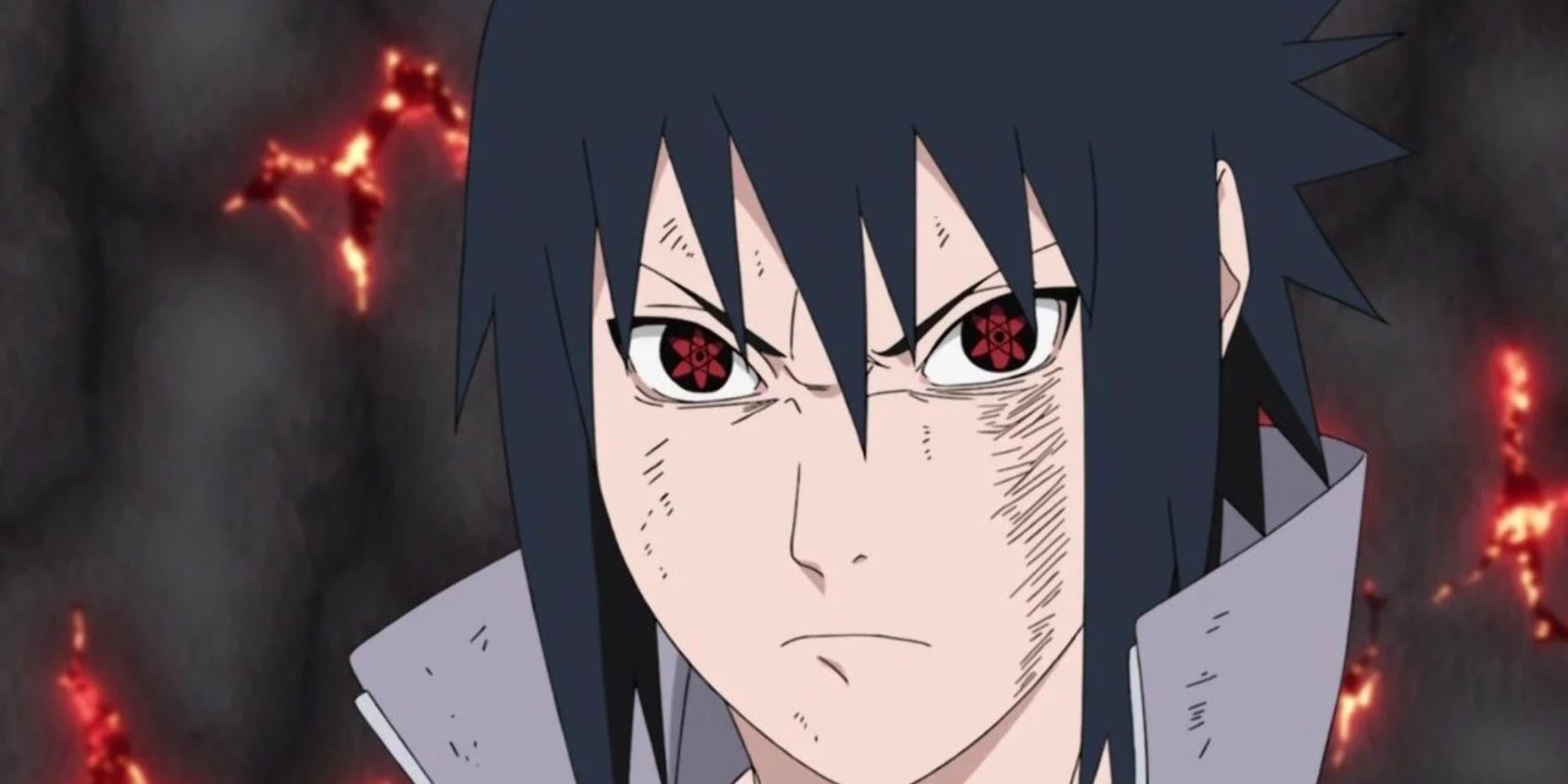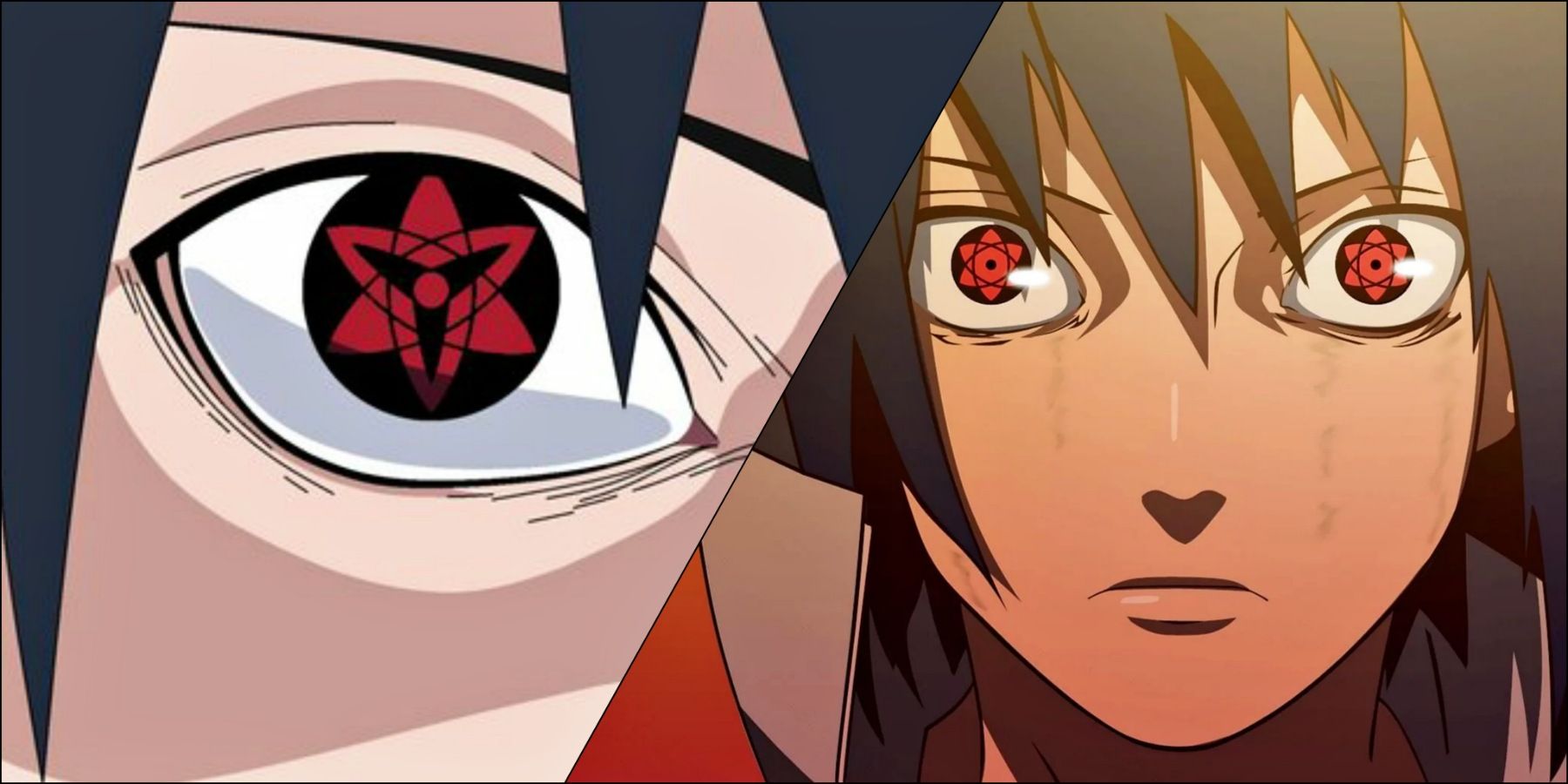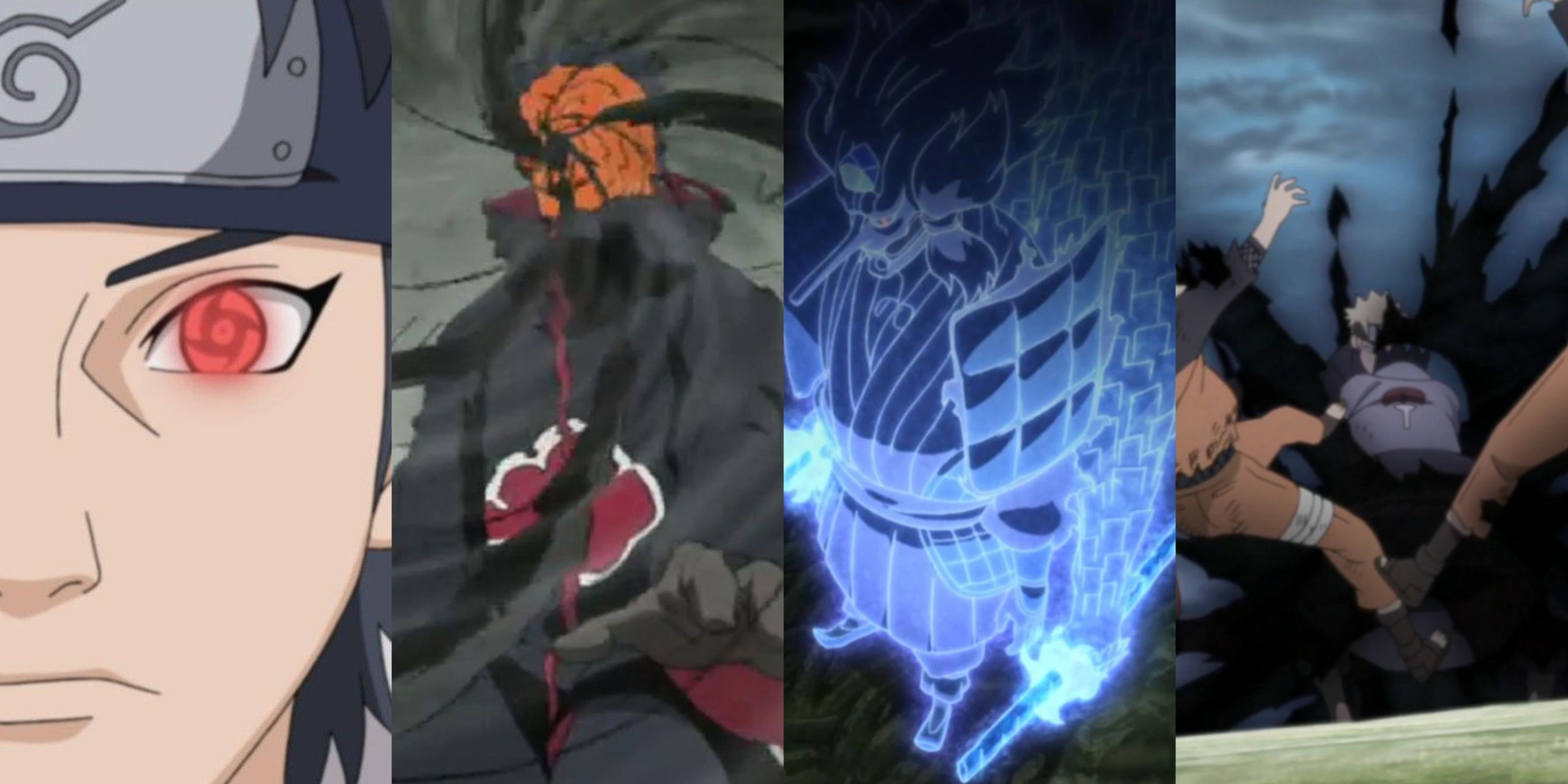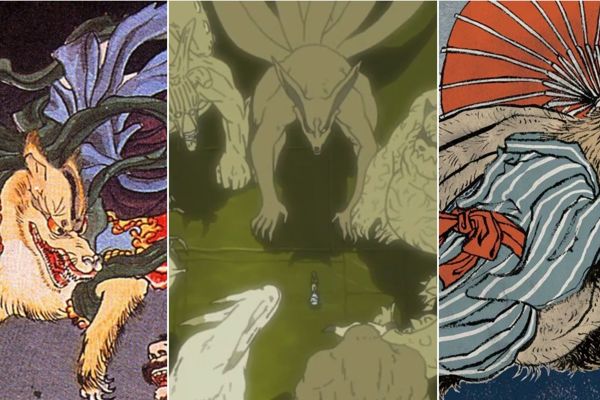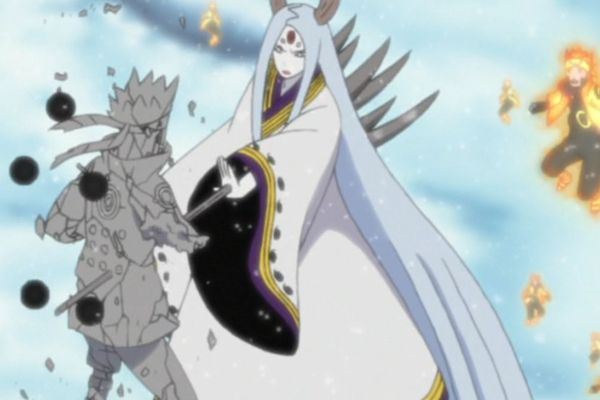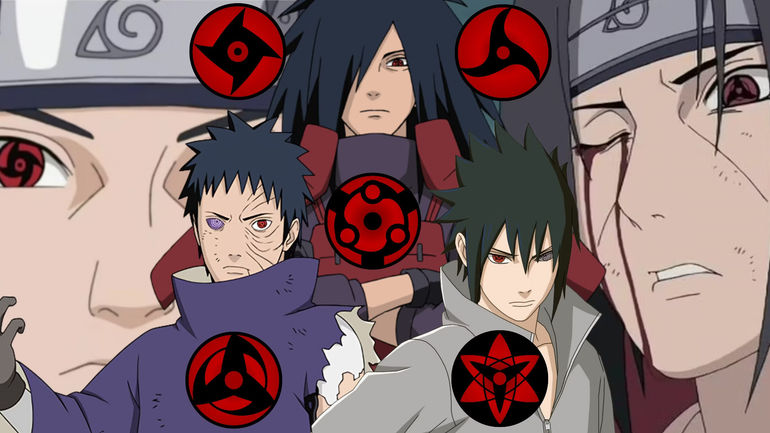
Naruto: Examining the Extent of Mangekyo Sharingan's Influence

Delve into the impact of the Uchiha clan's powerful dojutsu on Naruto's storyline and the potential drawbacks it brought to later arcs. Was the Mangekyo Sharingan's prominence in the series excessive?
The Mangekyo Sharingan, considered as the evolution of the Sharingan and the signature dojutsu of the Uchiha clan, was a power that only a few individuals in Masashi Kishimoto's Naruto were able to awaken. Typically, this transformation was triggered by the loss of a loved one, with the subsequent trauma and intense grief playing a key role in its activation. An example of this is Sasuke Uchiha, who unlocked his Mangekyo Sharingan following the death of his older brother Itachi, upon discovering the truth about his involvement in the Uchiha Clan Downfall.
In the latter part of Naruto, the Mangekyo Sharingan played a significant role in both the series' mythology and the battles that drove its narrative forward. However, the overwhelming powers associated with it, along with the removal of previous limitations on its usage, contributed to some of the drawbacks of Naruto's later story arcs. This shift led to a change in the dynamics of fights, transitioning from strategic and skill-based encounters to colossal battles resembling mecha battles with chakra avatars. Considering these developments, one might question whether the Mangekyo Sharingan was excessively relied upon in the series.
What Were The Limitations Of The Mangekyo Sharingan?
uchiha itachi using his sharingan - What Were The Limitations Of The Mangekyo Sharingan?
In its initial appearance during Part I of Naruto, the Mangekyo Sharingan was not formally introduced. Only Itachi's use of Tsukuyomi and Amaterasu hinted at the fact that he had awakened it. Itachi faced challenges as the Mangekyo Sharingan strained his already weakened body. He struggled to recover from using his abilities repeatedly against Kakashi, Sasuke, and ultimately, Jiraiya. Despite Jiraiya's clever technique to counter Amaterasu by sealing the flames, this solution to Itachi's technique was never replicated.
The formal naming of the Mangekyo Sharingan occurred in Part II, during Itachi's showdown with Sasuke at the Uchiha Clan Hideout. Itachi showcased the disparity in their strength by unveiling the dojutsu's ultimate technique: Susanoo. With Susanoo, Itachi managed to surpass Sasuke's formidable Lightning Release technique, Kirin. However, Itachi's demise swiftly followed due to his illness. By then, Itachi's vision had nearly diminished entirely, serving as a warning of the risks associated with wielding such immense power. Sasuke, upon awakening his own Mangekyo shortly after, would soon discover the strict limits and consequences of this ability, which were not to last for long.
Empowered By The Curse Of Hatred
Sasuke Uchiha - Empowered By The Curse Of Hatred
Central to the evolution of the Mangekyo Sharingan was the Uchiha clan's Curse of Hatred. Most Uchiha only unlock their Sharingan after experiencing profound grief, and this requirement is even more stringent for its advanced form. A prime illustration of this is Sasuke's transformation into a villain. During the Five Kage Summit Arc, he was consumed by a desire for revenge upon discovering the truth about Itachi. Sasuke utilized his enhanced visual abilities to the fullest extent in his quest to eliminate Danzo Shimura, the primary culprit behind the downfall of the Uchiha Clan. Regrettably, the situation took a turn for the worse due to the original limitations placed on the Mangekyo Sharingan.
Exploring Enhancements, Workarounds, And Escalating Strength
Sasuke Mangekyo Sharingan - Expanding Abilities, Loopholes, And Power Creep
Sasuke's vision was severely impaired after defeating Danzo, a clear consequence of his reckless use of his visual abilities. To counter this, he made the decision to transplant Itachi's eyes in order to awaken the Eternal Mangekyo Sharingan. This marked a significant advancement in the dojutsu's evolution, achieved by acquiring the eyes of a close family member to ensure they would never lose their light. With this transformation, Sasuke's power surged, no longer being threatened by the possibility of blindness. However, this newfound strength also brought about new challenges, as he now had free reign to utilize abilities like Susanoo and Amaterasu without restraint.
The introduction of a reincarnated Madara Uchiha at a similar time, along with the reveal that the masked Madara was actually Obito Uchiha, brought new Mangekyo users into the mix. Madara's constant use of his eyes was justifiable as an Eternal Mangekyo Sharingan user and an immortal reincarnation. On the other hand, Obito's frequent use of Kamui without any apparent vision loss raised questions. The speculation about the healing abilities of his artificial arm made from Hashirama Senju's cells continues even after the series ended, with no definitive answer in sight.
Similarly, Kakashi, who previously struggled to use Kamui more than once a day, now utilizes it in almost every battle without any negative effects. The over reliance on Susanoo by Sasuke and Madara, with no consequences for activation, contributed significantly to the power escalation in the series. This left most of the Allied Shinobi Forces powerless against Madara until Naruto distributed the Nine-Tails' chakra among them. As a result, possessing the Mangekyo Sharingan or a comparable power-up became the minimum requirement for participating in the battle, pushing Naruto's supporting characters to the sidelines.
A Convenient Solution For Major Conflicts
Strongest Mangekyo Sharingan Ability Naruto - Featured - A Convenient Solution For Major Conflicts
In conclusion, the method used by Itachi and Sasuke to break Kabuto Yakushi's Edo Tensei was a result of the unique abilities of the Sharingan and Mangekyo Sharingan. Itachi's liberation from Kabuto's control was made possible by the presence of Shisui's Kotoamatsukami, which had been sealed into Naruto. However, the alignment of various circumstances required for this event to happen raises questions about the plausibility of the outcome.
Moving on, the introduction of Izanami by Itachi lacked proper foreshadowing and seemed out of place within the established power system of Naruto. While the emotional moments shared between Itachi and Sasuke were significant for their character development, the resolution of their battle against Kabuto felt unsatisfactory, indicating a departure from the original intent of the Sharingan's capabilities. Additionally, Kakashi's utilization of the Susanoo during the fight against Kaguya further demonstrated the expanding boundaries of the Mangekyo Sharingan's capabilities.
When the Sharingan was first introduced, it was a cleverly designed ocular ability that could aid shinobi in quickly acquiring new techniques or confusing their opponents in battle. Users still needed to rely on their own skills and strategic thinking to emerge victorious in combat.
By the end of Naruto, the Mangekyo Sharingan had evolved to create undying flames, teleport, grant intangibility, summon towering spectral warriors for epic battles, and even rewrite reality itself. Despite criticisms of over or underutilization, the Sharingan had become a go-to solution for seemingly insurmountable challenges, often resolved through sheer force rather than the strategic depth that initially defined the series.
Naruto can be streamed on Crunchyroll.
Editor's P/S:
The article provides a comprehensive analysis of the Mangekyo Sharingan, its evolution, strengths, and drawbacks in Masashi Kishimoto's Naruto series. It effectively highlights the shift from strategic battles to overwhelming power clashes, questioning the excessive reliance on this dojutsu. The exploration of the Curse of Hatred, the introduction of enhancements and workarounds, and the escalation of strength are explored in depth, showcasing the impact on the series' mythology and narrative.
Overall, the article offers a well-reasoned and thought-provoking perspective on the Mangekyo Sharingan. It raises valid concerns about the potential overuse of the dojutsu, leading to a departure from the initial emphasis on skill and strategy. While the article acknowledges the emotional moments and character development associated with the Mangekyo Sharingan, it also suggests that the resolution of conflicts through sheer force may have diminished the depth and complexity that characterized the series' earlier battles.
-2.jpg)
